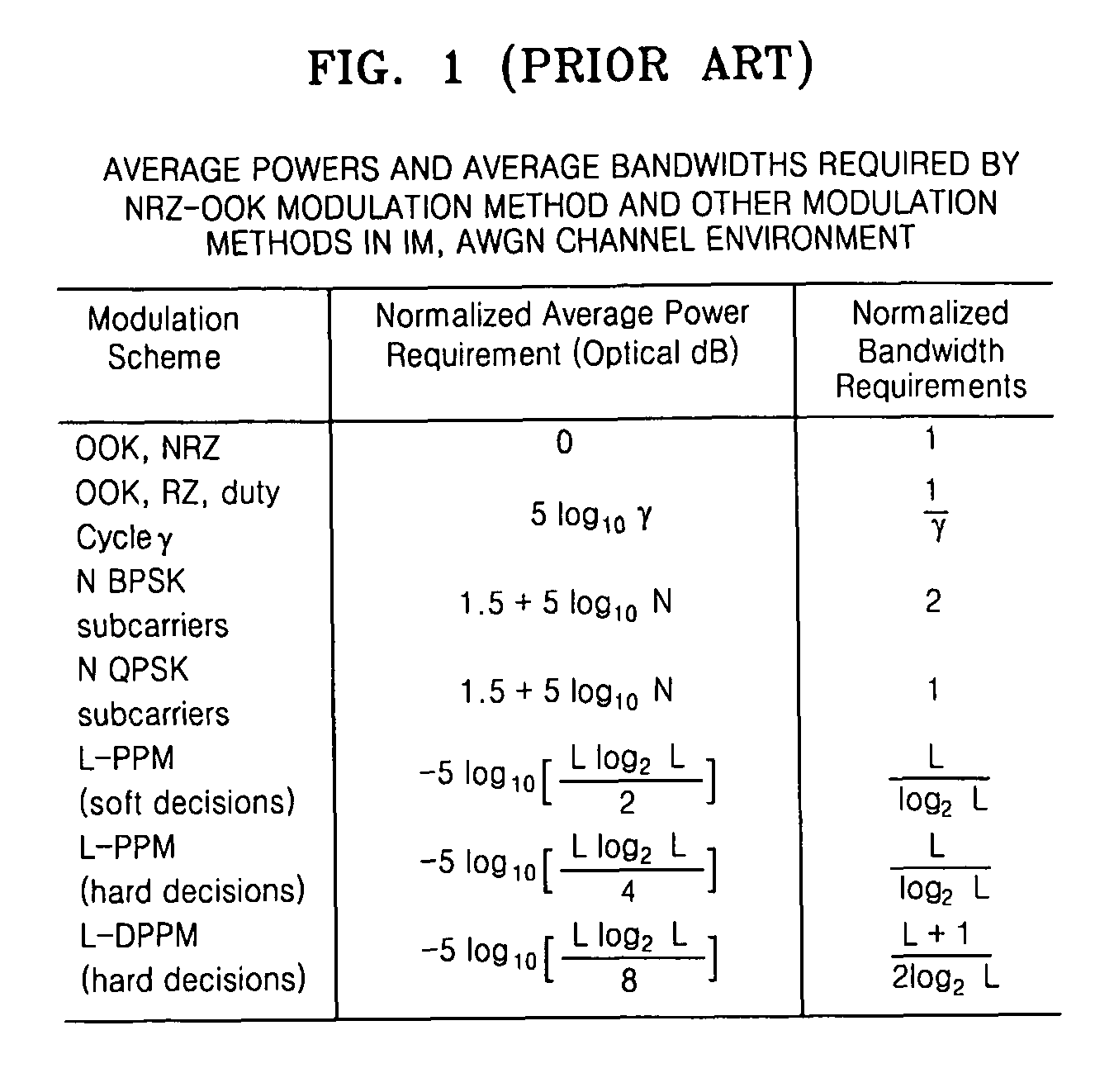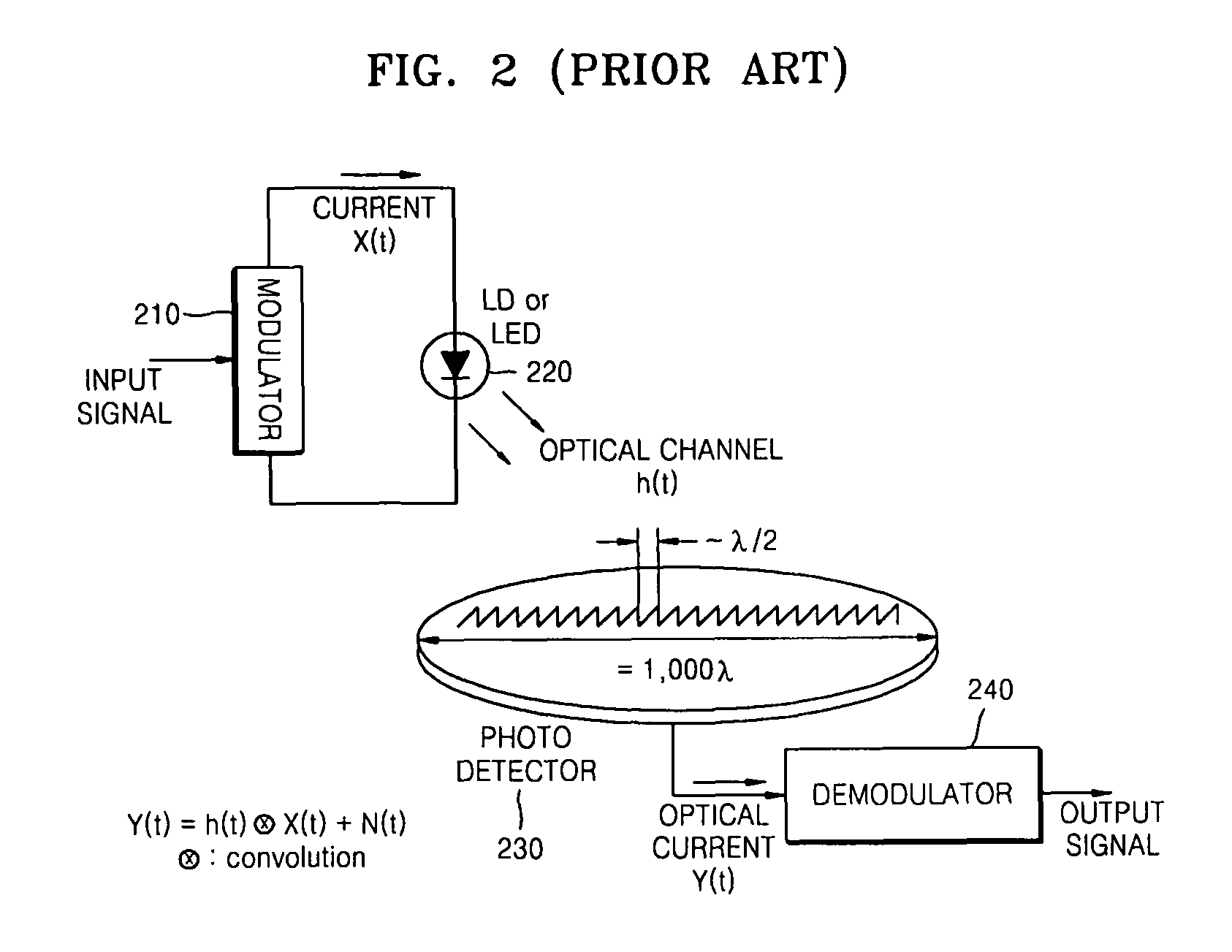Modulation and demodulation apparatuses and methods for wired/wireless communication system
a technology of wired/wireless communication and demodulation apparatus, applied in the field of wired/wireless communication system demodulation apparatus and methods, can solve the problems of difficult and complicated realization, inability to guarantee a communication speed of 10 mb/s or higher, and inability to use turbo equalizer-based methods, etc., to achieve high transmission power efficiency
- Summary
- Abstract
- Description
- Claims
- Application Information
AI Technical Summary
Benefits of technology
Problems solved by technology
Method used
Image
Examples
Embodiment Construction
[0045]The present invention will now be described more fully with reference to the accompanying drawings in which exemplary embodiments of the invention are shown.
[0046]FIG. 1 is a table presenting the average powers and bandwidths required by a non-return-to-zero (NRZ) on-off keying (OOK) method and other modulation methods in an intensity modulation (IM), additive white Gaussian noise (AWGN) channel environment. FIG. 1 says that all the known MSM has a poor transmission power efficiency for IM
[0047]FIG. 2 is a diagram illustrating a conventional IM / DD. Referring to FIG. 2, an input signal includes data to be transmitted, and a modulator 210 converts the input signal into line code which is suitable for a given channel, amplifies the line code to a current suitable for driving a laser diode (LD) / light-emitting diode (LED) 220, and outputs the current.
[0048]A received optical signal is converted into an electric signal by a photo detector 230 such as an avalanche photodiode (APD) or...
PUM
 Login to View More
Login to View More Abstract
Description
Claims
Application Information
 Login to View More
Login to View More - R&D
- Intellectual Property
- Life Sciences
- Materials
- Tech Scout
- Unparalleled Data Quality
- Higher Quality Content
- 60% Fewer Hallucinations
Browse by: Latest US Patents, China's latest patents, Technical Efficacy Thesaurus, Application Domain, Technology Topic, Popular Technical Reports.
© 2025 PatSnap. All rights reserved.Legal|Privacy policy|Modern Slavery Act Transparency Statement|Sitemap|About US| Contact US: help@patsnap.com



